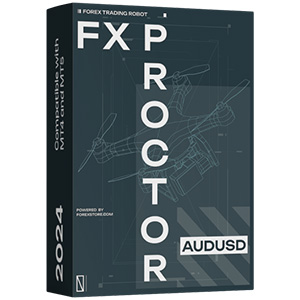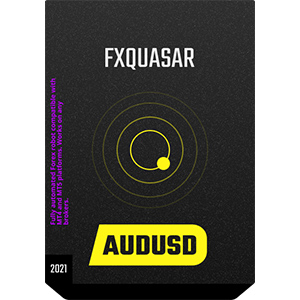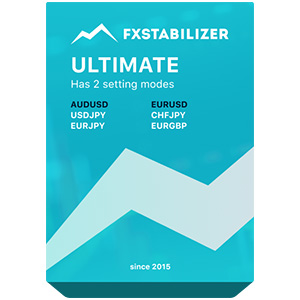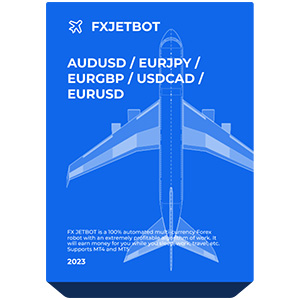
Im Laufe des Bestehens des Devisenmarktes haben Händler Dutzende verschiedener Strategien entwickelt, die ihnen helfen, erfolgreich zu sein und ein anständiges Einkommen zu erzielen. Allerdings können all diese Strategien in drei Kategorien unterteilt werden: langfristig, kurzfristig und Scalping. Das Daytrading ist ein kurzfristiger Typ und beinhaltet das Öffnen und Schließen von Trades innerhalb eines Tages.
Am häufigsten wird ein solcher Handel von Marktteilnehmern gewählt, die den Devisenmarkt als ihre tägliche Arbeit betrachten. Die Strategie erfordert aktive Beteiligung, ist aber dennoch nicht so intensiv wie Scalping. Meistens gelingt es den Händlern, während des Tages nur eine Position zu eröffnen und zu schließen.
Die hohe Marktvotalität ermöglicht es, signifikante Preisbewegungen zu erfassen und Gewinne ohne lange Wartezeiten zu erzielen. Vielleicht ist dies der Grund, warum das Daytrading der beliebteste Stil unter Devisenhändlern ist. Dieser Artikel untersucht die Merkmale dieser Strategie, ihre Vor- und Nachteile. Außerdem erhalten Sie nach dem Lesen einen Schritt-für-Schritt-Plan und detaillierte Empfehlungen, um mit dem Daytrading zu beginnen.
Wesentliche Merkmale des Daytradings auf dem Devisenmarkt
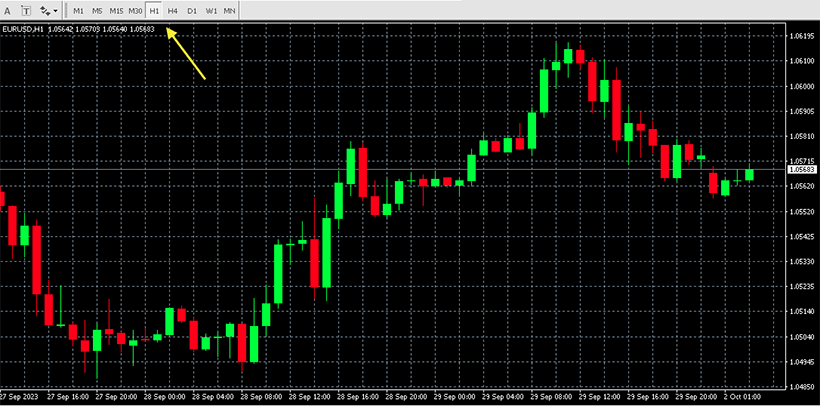
In einigen Quellen finden Sie den Begriff "Intraday-Handel". Diese Konzepte sind austauschbar und haben die gleiche Bedeutung. Die grundlegenden Merkmale dieser Methode sind wie folgt:
- Der Trader hält die Position nicht länger als 24 Stunden offen. Dies ermöglicht es Ihnen, Swap-Kosten zu vermeiden.
- Der beliebteste Zeitrahmen für die Analyse ist H1. Allerdings verwenden Trader oft M30 und H4 für zusätzliche Bestätigung von Signalen.
- Das Intraday-Trading ermöglicht es Ihnen, ohne eine große Einzahlung zu verdienen.
- Im Gegensatz zum Scalping bleibt die Position normalerweise mehrere Stunden lang offen, was dem Trader Zeit gibt, die Situation zu analysieren und die erforderlichen technischen Werkzeuge sorgfältig zu nutzen.
- Es gibt praktisch kein Preisrauschen, das für kürzerfristige Strategien üblich ist.
- Broker sind eher bereit, mit Day-Tradern als mit Scalpern zu arbeiten.
- Die Volatilität bei einigen Währungspaaren im Day-Trading kann tagsüber 10% erreichen.
Die Forex-Intraday-Trading-Strategie ist eine beliebte Wahl unter Anfängern. Erstens erfordert sie Aufmerksamkeit auf den Markt und hilft dabei, schnell wichtige Erfahrungen zu sammeln. Zweitens ermöglicht die Intraday-Methode, heute mit einer bescheidenen Einzahlung zu beginnen zu verdienen.
High-Frequency Trading
Manchmal wird eine andere Strategie in die Kategorie des Day-Trading einbezogen - das High-Frequency Trading (HFT). Technisch gesehen beinhaltet es auch den Abschluss von Transaktionen innerhalb eines Tages, hat jedoch vollkommen unterschiedliche Merkmale. Zum Beispiel verwendet HFT in der Regel automatisierte Algorithmen, die Positionen ohne direktes menschliches Eingreifen eröffnen und schließen.
Natürlich erfordert High-Frequency Trading entsprechende Ausrüstung und Software. Um zehn oder hunderte Trades pro Tag zu tätigen, werden in der Regel Remote-Server mit Highspeed-Internet verwendet. Außerdem verwenden Trader fortschrittliche Roboter-Algorithmen, die die kleinsten Bewegungen auf dem Markt berücksichtigen und Dutzende von Faktoren analysieren. Normalerweise wird die HFT-Strategie von großen Playern (Hedgefonds, Banken und anderen Institutionen mit vielen Ressourcen) verwendet.
Kurze Haltezeiten
Für erfolgreiches Daytrading ist es wichtig zu verstehen, was eine Haltedauer ist. Dies ist die Zeit zwischen dem Öffnen und Schließen eines Handels. Wenn Sie zum Beispiel am Morgen einen Long-Trade eröffnen und ihn am Abend schließen, wird die Haltedauer die paar Stunden zwischen dem Kauf und Verkauf sein. Wie oben erwähnt, kann die Haltedauer bei einem Forex-Daytrading-System nicht mehr als 24 Stunden betragen. In der Regel halten Händler eine Position bis zu 10 Stunden offen. Bei hoher Volatilität kann dieser Zeitraum jedoch kürzer sein.
Tagesvolatilität
Die Tagesvolatilität ist eine Einnahmequelle für Händler. Es handelt sich um den Unterschied zwischen den Höchst- und Tiefstkursen eines Vermögenswerts und entspricht tatsächlich dem maximalen Gewinnwert. Erfahrene Teilnehmer am Devisenmarkt wissen, dass sie erfolgreich handeln müssen, indem sie sich die Diagramme ansehen und externe Faktoren analysieren, die die Marktvolatilität verursachen. Dies ermöglicht es ihnen, den Beginn eines neuen Trends rechtzeitig zu erkennen und eine Position zu eröffnen.
Beliebte Handelspaare wie USD/EUR haben selten eine hohe Volatilität. Einige Händler bevorzugen seltener gehandelte Vermögenswerte mit Schwankungen von bis zu 3-5% und sogar höher. Die hohe Liquidität beliebter Währungen eröffnet jedoch auch Möglichkeiten für stabile Einnahmen. Wichtig ist, die Merkmale eines bestimmten Vermögenswerts gut zu verstehen und nicht kurzfristigen Emotionen nachzugeben.
Was brauchen Sie, um ein Daytrader im Devisenhandel zu sein?
Die Wahl einer Handelsstrategie wird oft durch die Psychologie und individuelle Vorlieben einer Person bestimmt. Wenn Sie nicht bereit sind, lange zu warten und schnell Ergebnisse Ihrer Arbeit sehen möchten, könnte das Daytrading im Devisenhandel die ideale Option für Sie sein. Es eignet sich auch für aufmerksame Händler, die den Markt analysieren und fundierte Entscheidungen treffen möchten.
Wenn diese Beschreibung Ihrem Charakter entspricht, können Sie die ersten Schritte unternehmen. Der allgemeine Plan sieht folgendermaßen aus:
- Studiere Broker. Sie müssen ein gutes Verständnis dafür haben, wie Broker arbeiten, welche Bedingungen sie für Anfänger bieten, welche Mindesteinlage Sie benötigen usw. Vergleichen Sie Angebote nach allen möglichen Parametern (Spread, Hebelwirkung, zusätzliche Dienstleistungen). Die Auswahl eines Vermittlers ist ein wichtiger Schritt, der den Erfolg des zukünftigen Daytradings bestimmt.
- Studiere den Markt. Analysieren Sie Preisänderungen der wichtigsten Währungspaare in den letzten Tagen. Bestimmen Sie die durchschnittliche und maximale Volatilität während des Tages. Lesen Sie Bewertungen und Prognosen von Experten und prüfen Sie, wie genau sie sind. Bevor Sie eine Einzahlung tätigen, müssen Sie verstehen, wie Sie handeln werden.
- Studiere die Handelsplattform. Der Handel kann nicht ohne Verständnis der Funktionalität der Plattform begonnen werden. Sie müssen in der Lage sein, die Hauptindikatoren zu verwenden, Zeitrahmen zu ändern und die Schlüsselmuster japanischer Kerzen zu kennen. Möglicherweise müssen Sie einen Schulungskurs oder einige Beratungen in Anspruch nehmen.
- Bestimme das Kapital. Wenn Sie Anfänger sind, empfehlen wir nicht, Geld zu leihen, um Ihre Reise im Devisenhandel zu beginnen. Die Einzahlung sollte für Sie erschwinglich sein. Dies entlastet Sie von unnötiger Verantwortung für Ihr Kapital und ermöglicht es Ihnen, ohne Emotionen zu handeln.
- Strategie. Jeder Forex-Tageshändler weiß, dass der Handel ohne Strategie selten zum Erfolg führt. Überlegen Sie sich einen Plan und Ihre Handlungen in verschiedenen Situationen. Verbessern Sie Ihre Strategie und setzen Sie Ihren Weg zum Ziel fort.
Der Intraday-Handel ist ein profitabler Stil, der Ihnen ein anständiges tägliches Einkommen bringen kann. Er erfordert jedoch auch Devisenkenntnisse, harte Arbeit und eine gute Vorbereitung.
Tools und Ressourcen für Daytrader
Heutzutage ist der Handel ohne technische Tools und digitale Ressourcen unmöglich. Ihre Ressourcenbasis kann in zwei Teile unterteilt werden: Hardware und Software. Lassen Sie uns mit den physischen Geräten beginnen, die ein Daytrader benötigt:
- Personal Computer. Da die Ausführungsgeschwindigkeit von Trades wichtig ist, benötigen Sie einen PC mit ausreichend RAM und einem ordentlichen Prozessor. Dies ermöglicht es Ihnen auch, mehr als ein MT4/5-Terminal zu verbinden.
- Smartphone. Eine Intraday-Strategie erfordert, dass Sie schnell auf Marktschwankungen reagieren. Daher ist es wichtig, dass Ihr Mobilgerät auch eine Handelsplattform installiert hat. Ein weiterer Vorteil sind Benachrichtigungen über Preisbewegungen. Sie ermöglichen es Ihnen, kein Signal zu verpassen und keinen wesentlichen Teil Ihrer Gewinne zu verlieren.
- Ein hochwertiger Router und schnelles Internet. Datenübertragungsgeschwindigkeit und eine stabile Verbindung sind für Trader notwendig. Dies ist besonders wichtig, wenn Sie schnell Positionen eröffnen und schließen müssen.
- Remote-Server. Wenn Sie ein bestimmtes Niveau erreicht haben, möchten Sie vielleicht skalieren und zusätzliche Terminals anschließen. Ein qualitativ hochwertiger VPS ermöglicht es Ihnen, ohne Einschränkungen zu handeln. Es ist auch nützlich, wenn Sie reisen und nicht mit dem Handel aufhören möchten.
Neben physischen Geräten benötigen Sie auch digitale Ressourcen, wie analytische Programme oder eine Handelsumgebung. Lassen Sie uns diese genauer betrachten:
Handelsplattform. Die meisten Trader wählen Meta Trader 4 oder 5. Sie enthalten die notwendigen Tools für die technische Analyse und können aktualisiert werden.
Expert Advisors. Dies sind kompakte Programme, die nach Handelssignalen suchen und diese analysieren. Diese besten Forex-Roboter arbeiten viel schneller als Menschen und können bei richtiger Anwendung Ihre Gewinne erheblich steigern.
Zusätzliche Indikatoren. Einige fortgeschrittene Tools kosten Geld und können auf Ihrer MT4-Plattform installiert werden. Sie können genauere Signale liefern.
Analytische Ressourcen. Um Informationen über den Markt zu finden, benötigen Sie möglicherweise seriöse Websites mit aktuellen Analysen.
Der Devisenhandel (FX) ist ein aufregender Beruf, der Zeit braucht, um ihn zu erlernen. Mit grundlegenden Ressourcen wie einem Computer, Internet und einigen Programmen können Sie jedoch Ihren Lebensunterhalt verdienen und finanzielle Stabilität gewährleisten.
Mindestbetrag zum Starten des Day-Tradings auf Forex
Der Mindestbetrag für den Handel hängt immer mit zwei Faktoren zusammen: Gewinnziele und Risikomanagement. Je höher das Ziel, desto solider muss das Startkapital sein. Das Maß an Risikotoleranz bestimmt jedoch auch die anfängliche Einzahlung und die Handelsstrategie.
Wenn Sie ein Anfänger-Trader sind, wäre es eine gute Option, mit einem Demokonto zu beginnen. Dadurch können Sie die Strategie testen und verstehen, wie viel Geld Sie benötigen, um Ihr Ziel zu erreichen. Das Demotrading ist jedoch nur der erste Schritt, und für echte Gewinne benötigen Sie Investitionen.
Bei der Berechnung des Betrags ist es wichtig zu bedenken, dass der Broker Hebelwirkung bietet. Unterschiedliche Broker und Servicepakete können Verhältnisse von 1:500, 1:1000, 1:2000 und manchmal sogar mehr haben. Das bedeutet, dass Sie mit einer Einzahlung von 100 US-Dollar von 50 bis 200 Tausend handeln können.
Als Nächstes müssen Sie sich die durchschnittlichen Wechselkursschwankungen der von Ihnen gewählten Währungspaare ansehen. Natürlich werden Sie nicht die gesamte Einzahlung für eine Position verwenden - auch dies sollte berücksichtigt werden. Letztendlich erhalten Sie einen Betrag basierend auf Ihren Zielen, bevorzugten Vermögenswerten und Risikotoleranz.
Viele Anfänger beginnen ihre Reise im Devisenhandel mit einigen hundert Dollar. Dies wird in der Regel als Mindestbetrag zum Starten betrachtet. Wenn Sie jedoch ehrgeizig sind, ist es ratsam, das Kapital auf mindestens mehrere tausend US-Dollar zu erhöhen, wenn Sie Erfahrung und Wissen sammeln.
Forex Day-Trading-Strategien
Der Devisenintraday-Handel ist ein allgemeines Konzept. Sie sind nur durch den täglichen Zeitrahmen begrenzt, und alle anderen Aspekte des Handels können variieren. Wir schlagen vor, dass Sie mehrere Ansätze für diesen Handel in Betracht ziehen:
- Scalping. Dies ist die dynamischste Strategie, bei der ein Trader auf kleinen Zeitrahmen von bis zu mehreren Minuten spielt. Gleichzeitig kann die Anzahl der Transaktionen während des Tages signifikant sein.
- Range-Trading. Dabei versuchen Sie, die Unterstützungs- und Widerstandsniveaus eines Währungspaares zu bestimmen und im Intervall zwischen ihnen zu handeln.
- Analytisches Trading. Trader analysieren Marktsentimente sowie verschiedene wirtschaftliche und politische Anreize, um die Preisrichtung vorherzusagen.
Natürlich gibt es Dutzende anderer Ansätze für das Intraday-Trading. Sie können sie kombinieren, ergänzen und verbessern.
Risikomanagement im Day-Trading
Um Risiken effektiv zu managen, müssen Sie verstehen, was Sie beim Day-Trading im Devisenmarkt erwarten können. Hier sind einige negative Faktoren, die zu berücksichtigen sind:
- Plötzliche Trendwende aufgrund von Nachrichten, die sich zum Nachteil entwickeln. Um große Verluste zu vermeiden, wird empfohlen, Stop-Losses zu verwenden.
- Spätes Eröffnen einer Position kann zu minimalen Gewinnen oder sogar Verlusten führen. Verwenden Sie mehr technische Analysewerkzeuge für eine genauere Bewertung.
- Technische Probleme. Im unpassendsten Moment kann die Stromversorgung oder das Internet verschwinden. Verwenden Sie USV und haben Sie immer Backup-Quellen für das Internet.
- Menschlicher Faktor. Seltsamerweise gehören emotionale Entscheidungen zu den häufigsten Ursachen für finanzielle Verluste. Versuchen Sie, Ihrer Strategie zu folgen und Entscheidungen auf Fakten zu basieren.
Das Risikomanagement ist ein wichtiger Teil des Handels, und diese Tipps können dazu beitragen, es zu verbessern.
Forex Day Trading Regeln und Tipps
Für das profitabelste Trading können Sie diese Forex Day Trading Regeln verwenden:
- Bestimmen Sie die Instrumente, die Sie in Ihrer Strategie verwenden werden.
- Bestimmen Sie die Priorität der Indikatoren (primär und sekundär) bei Entscheidungen.
- Vergessen Sie nicht, Stop-Loss- und Take-Profit-Orders festzulegen.
- Bestimmen Sie die Muster, auf die Sie sich konzentrieren werden.
- Warten Sie mindestens eine halbe Stunde nach Öffnung des Marktes, bevor Sie eine Position eröffnen.
- Eröffnen Sie keine Trades während der Veröffentlichung von Nachrichten.
- Beginnen Sie mit einem Mindesteinzahlungsbetrag zu handeln und riskieren Sie nicht zu viel, bis Sie genügend Erfahrung gesammelt haben.
Erfahrung ist die Grundlage für Erfolg im Devisenhandel. Die Verwendung dieser Tipps wird Ihnen helfen, die notwendige Praxis ohne große Verluste zu erhalten.
Gemeinsame Fehler beim Forex-Tageshandel, die vermieden werden sollten
Neben dem Wissen darüber, was zu tun ist, sollten Trader verstehen, was sie nicht tun sollten. Hier sind einige beliebte "Nicht-Tun" beim Tageshandel:
- Versuchen Sie nicht, verlorene Trades auszugleichen, indem Sie zu große neue Positionen eröffnen.
- Eröffnen Sie keine Position zu früh in der Erwartung von Auswirkungen durch Nachrichten.
- Risikieren Sie nicht einen großen Teil der Einzahlung bei einem Trade.
- Erwarten Sie nicht zu viel. Der Handel erfordert Fähigkeiten, die mit der Zeit kommen.
Und schließlich, haben Sie keine Angst, Fehler zu machen und aus ihnen zu lernen. Dies wird Ihnen helfen, schnell ein Profi zu werden. Jetzt, da Sie wissen, was der Devisenhandel ist, lassen Sie uns die Informationen zusammenfassen.
Vor- und Nachteile des Forex-Tageshandels
Bevor wir diese Überprüfung abschließen, fassen wir die Vor- und Nachteile des Tageshandels zusammen. Lassen Sie uns mit den Vorteilen beginnen:
- Keine Swaps. Trades werden innerhalb eines Tages eröffnet und geschlossen.
- Es gibt Zeit für Analyse und informierte Entscheidungsfindung.
- Psychologische Zufriedenheit durch schnelle Gewinne.
Außerdem sind einige Nachteile offensichtlich:
- Der Spread beim Intraday-Handel kann sich auf die Gewinne auswirken.
- Es gibt erhebliche Risiken.
- Der Handel erfordert viel Aufmerksamkeit und Zeitinvestition.
Wie wir bereits gesagt haben, erfordert das Daytrading bestimmte Voraussetzungen und Vorlieben. Dennoch ist heute 24 Stunden die bevorzugte Arbeitszeit für die meisten Händler.
Das Fazit
Daytrader können gutes Geld verdienen und täglich von Preisschwankungen profitieren. In diesem Artikel haben wir uns die Merkmale dieses Handelsstils angesehen und einen Schritt-für-Schritt-Plan für den Einstieg gegeben. Bevor Sie beginnen, sollten Sie die Vor- und Nachteile abwägen und sich gut vorbereiten. Natürlich gibt es Risiken, aber Wissen, Erfahrung und Interesse am Devisenhandel werden Ihnen helfen, eine erfolgreiche und profitable Karriere zu machen.



